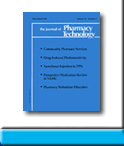 |
 |
THERAPEUTIC OPTIONS IN
THE TREATMENT OF CLOZAPINE-INDUCED ADVERSE EFFECTS
Mohammad Masud Iqbal, Alka Aneja, Atiq Rahman, James L Megna, Laila
Yasmin, Thomas L Schwartz, Saabry Osmany, and Mohammed Adnan
Alam
To request full article click here.
OBJECTIVE: To review the therapeutic options in the management of clozapine-induced adverse effects.
DATA SOURCES: A MEDLINE search (from 1966 to present) was conducted, and English-language studies and review articles were retrieved to review the adverse effects of clozapine and their management.
STUDY SELECTION AND DATA EXTRACTION: All studies evaluating clozapine’s adverse effects, such as agranulocytosis, seizures, neuroleptic malignant syndrome, hypersalivation, weight gain, sedation, fatigue, orthostatic hypotension, eosinophilia, delirium, new-onset diabetes, constipation, nausea, tachycardia, myocarditis, and pancreatitis, and their management were included.
DATA SYNTHESIS: Clozapine, an atypical antipsychotic that has been proven effective and comparable, as well as superior, to conventional antipsychotics in treatment-resistant schizophrenia, is also being used in the treatment of a wide variety of other psychiatric conditions, including suicidal ideation, tardive dyskinesia, and affective disorders such as depression, bipolar disorders, and schizoaffective disorder. Although clozapine exhibits a markedly low incidence of extrapyramidal symptoms compared with similar medications, it has other adverse effects, some of which are potentially life threatening, requiring careful monitoring. The adverse effects of clozapine range from benign drooling, weight gain, nausea, and constipation, to life-threatening agranulocytosis, seizures, and neuroleptic malignant syndrome (NMS). Mandatory periodic white blood cell monitoring has resulted in dramatic reduction in mortality due to clozapine-induced agranulocytosis, promoting high adherence by patients. Prompt diagnosis and treatment of adverse effects of clozapine has also been effective in reducing complications, including mortality due to other serious adverse effects such as NMS and seizure. Other adverse effects are comparatively benign and can be managed effectively.
CONCLUSIONS: Clozapine has a wide variety of adverse effects, some of which are potentially life threatening. Clinicians should be aware of possible severe complications and emergency management. Differentiating between minor and major adverse effects and initiating appropriate intervention is essential for a positive therapeutic outcome when prescribing clozapine.
J Pharm Technol 2004;20:155-64.
To request full article click here.
|
|
|
||
|

